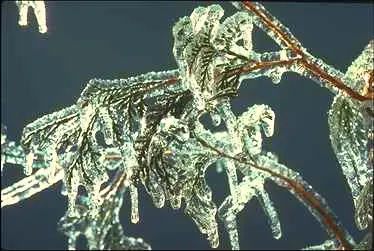A reader writes: We had unusually cold snap in Tennessee last week. I am concerned specifically about hydrangeas and crepe myrtles. I covered smaller plants for 4 nights in a row but these were too large to cover. The leaves are turning black. What do I do? This past week unseasonable weather and heavy snows in the north has wrecked the cherry blossoms, crushed tulips and put spring off indefinitely. These late season anomalies of cold are particularly problematic when trees are leafing out and the snow builds up on branches too deep. They snap easily under the weight. Frost burn like this is also the case as new leaves emerge in their most delicate state. The degree of damage will take a week or two to reveal itself. With the hydrangeas, wholly burned leaves will dry out and fall off. Those partially burned will remain on the plant and look terrible.
You can take scissors and cut the damaged parts off to get rid of the blackness, but only if the frost period is passed. Cutting too early makes the new edge more vulnerable to more frost than if it was protected by the dead cells. The most important thing is the apical meristem. This is the part at the tip of every branch where there is the most cell division. New growth and especially that which supports the flowers originates here. If this meristem tissue is frozen it too will turn brown or black and the tip of the branch will die. If this is the case it’s best to cut this off and force new meristems to be formed via the upper most buds of that branch. But don’t cut until you’re SURE its dead. Finally, it’s time that tells you what to do. Wait for the weather to calm down before making any decisions. Too often premature efforts to get rid of ugly frost damage causes more problems than the frost itself.

